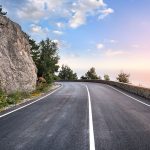The Healing Power of Nature: Why Hiking Trails Matter for Aging Adults
Spending time outdoors isn’t just a luxury—it’s a vital part of maintaining health and vitality as we age. Hiking trails offer a unique blend of physical activity, mental clarity, and spiritual connection that can transform the lives of older adults. The rhythmic motion of walking, the fresh air, and the beauty of natural surroundings create an environment where the body and mind thrive. For many aging individuals, however, accessing these benefits can feel out of reach due to physical limitations or poorly designed trails. This article explores how communities and trail planners can make hiking more accessible for older adults while highlighting practical strategies to help seniors enjoy these spaces safely and confidently.
Understanding the Challenges Faced by Aging Hikers
Aging brings changes that can make navigating traditional hiking trails difficult. Uneven terrain, steep inclines, and lack of resting spots often become barriers rather than invitations to explore. Balance issues, reduced stamina, and joint discomfort may discourage older adults from venturing onto trails designed for younger, more agile hikers. Additionally, the absence of clear signage, accessible restrooms, or shaded areas can turn a peaceful outing into a stressful experience. Recognizing these challenges is the first step toward creating inclusive outdoor spaces where people of all ages and abilities feel welcome and supported.
Designing Trails That Welcome Everyone
Creating accessible hiking trails starts with intentional design choices that prioritize safety and comfort. Wide, stable paths made of packed gravel or rubberized surfaces provide secure footing for those using canes, walkers, or wheelchairs. Gentle slopes replace abrupt inclines, while strategically placed benches and shaded rest areas allow hikers to catch their breath without feeling rushed. Installing handrails along steeper sections or near steps adds stability, and clear, easy-to-read signage ensures everyone can navigate trails independently. These adjustments not only benefit older adults but also enhance the experience for families with young children, individuals with disabilities, and casual hikers seeking a relaxed walk.
Adaptive Equipment: Enhancing Mobility and Confidence
Modern technology offers tools that empower older adults to explore trails they might otherwise avoid. Lightweight, adjustable walking poles provide balance and reduce strain on knees and hips, while all-terrain wheelchairs with wide tires tackle uneven surfaces with ease. For those who prefer seated exploration, mobility scooters designed for outdoor use open up new possibilities for connecting with nature. Encouraging local parks and recreation departments to offer equipment rentals ensures cost isn’t a barrier to participation. By combining trail improvements with accessible gear, communities can remove obstacles that prevent seniors from enjoying the great outdoors.
Building Community Support for Inclusive Outdoor Spaces
Change happens when individuals and organizations collaborate to advocate for accessible trails. Local governments can partner with senior centers, fitness groups, and environmental nonprofits to identify trail projects that meet the needs of aging populations. Volunteer-led “trail adoption” programs can maintain accessible paths, while workshops on safe hiking practices build confidence among older adults. Highlighting success stories—such as parks that have implemented universal design principles—can inspire other communities to follow suit. When neighbors work together to prioritize inclusivity, everyone benefits from stronger social connections and healthier lifestyles.
The Role of Policy in Expanding Trail Accessibility
Legislation plays a crucial role in ensuring outdoor spaces are welcoming to people of all ages and abilities. Advocating for funding through local bond measures or state recreation grants can provide resources for trail upgrades. Incorporating accessibility standards into park development plans ensures new trails meet the needs of diverse users from the outset. Supporting initiatives like the Americans with Disabilities Act (ADA) helps protect the right to enjoy public lands, while encouraging trail managers to go beyond minimum requirements fosters innovation. By engaging with policymakers and voting for pro-accessibility initiatives, advocates can shape a future where nature is truly accessible to all.
Staying Active Safely: Tips for Older Hikers
For seniors eager to hit the trails, preparation is key to a positive experience. Starting with shorter, well-maintained routes builds endurance gradually, while wearing supportive footwear prevents slips and blisters. Carrying a lightweight backpack with water, snacks, and a basic first-aid kit ensures readiness for unexpected delays. Hikers should also share their plans with a friend or family member, especially when exploring unfamiliar areas. Wearing layers allows for easy temperature adjustments, and using sunscreen or insect repellent protects against common outdoor hazards. By prioritizing safety and listening to their bodies, older adults can enjoy the rewards of hiking without unnecessary risks.
The Mental and Emotional Benefits of Nature
Beyond physical health, spending time on trails offers profound mental and emotional benefits for aging adults. The quiet rustle of leaves, the scent of pine trees, and the sight of sunlight filtering through branches create a calming atmosphere that reduces stress and anxiety. Social interaction during group hikes fosters a sense of belonging, while the simple act of setting foot on a trail can boost self-esteem and resilience. Studies suggest regular exposure to green spaces may even improve memory and focus, offering protection against cognitive decline. These intangible rewards make accessible trails an essential component of holistic well-being for seniors.
Revitaprost: Supporting Prostate Health for Active Lifestyles
For men over 50, maintaining prostate health is a key part of staying active and engaged with life’s pleasures, including outdoor adventures like hiking. While a balanced diet and regular exercise form the foundation of wellness, some individuals choose to complement their efforts with targeted support. Revitaprost is a premium supplement formulated to promote prostate health and urinary function, helping men feel their best as they age. Crafted with natural ingredients, it supports comfort and vitality, allowing users to focus on enjoying daily activities without distraction. As with any wellness product, individual results may vary, and it’s always wise to consult a healthcare provider before starting a new regimen. Those interested in learning more can visit the official website,revitaprost-official.top, to explore detailed information and make a purchase directly.
Embracing a Future Where Nature Belongs to Everyone
The movement toward accessible hiking trails isn’t just about infrastructure—it’s about redefining what’s possible for aging populations. Every bench installed, every path widened, and every community initiative launched sends a powerful message: nature belongs to everyone. By addressing physical barriers, fostering inclusivity, and celebrating the unique needs of older adults, we create spaces where wisdom, experience, and joy can flourish. Whether through policy changes, grassroots advocacy, or personal commitment to outdoor wellness, each step forward brings us closer to a world where the healing power of nature is within reach for all ages.
Taking the First Step Toward Healthier Adventures
The journey to accessible trails begins with awareness and action. Seniors can start by exploring local parks with gentle paths or joining guided nature walks tailored to their fitness level. Families might volunteer to help maintain trails or advocate for improvements at town hall meetings. Healthcare providers can educate patients about the benefits of outdoor activity and recommend resources for safe hiking. Even small efforts—like sharing a favorite accessible trail on social media or inviting a neighbor to join a walk—can ripple outward, inspiring others to embrace the outdoors. Together, these collective actions build a culture where aging isn’t a limitation but a celebration of life’s enduring potential.
By prioritizing accessibility, we honor the wisdom and resilience of older generations while nurturing their connection to the natural world. Whether through thoughtful trail design, adaptive equipment, or community collaboration, every effort to make hiking more inclusive enriches lives and strengthens our shared commitment to health and happiness. As we look ahead, let’s continue breaking down barriers, one step at a time, and ensure that the trails of today and tomorrow welcome every soul who seeks their peace and power.






